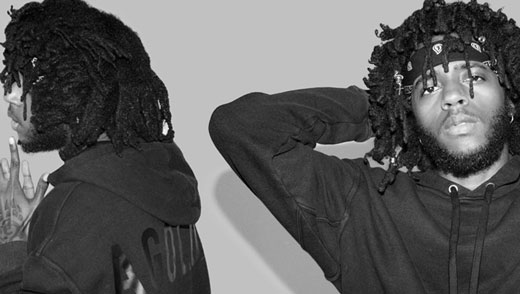A spray of piano melodies is our first impression of Terrace Martin when we call him at his L.A. base. “You caught me in the middle of my morning routine,” he laughs. “I practice every day from 7:30 a.m. to 10 a.m. and then I hit the studio.”
The dedicated Martin may not be a household name, but you’ll no doubt know his work and his influence on a record. While the roaring raps and ferocious vocals of Kendrick Lamar are central to the 2015 release To Pimp a Butterfly, there is another atmospheric presence on the album, one that lends the record its soulful force and jazz roots. That presence is the 38-year-old multi-instrumentalist and composer, who has since become a firm part of Lamar’s production team, working on Butterfly follow-up Damn as well as collaborating with the likes of Stevie Wonder, Snoop Dogg and Herbie Hancock and maintaining the status of celebrated musician in his own right.
Martin grew up in the height of a turbulent and crime-ridden Los Angeles in the ’80s and ’90s. His mother was a songwriter and pianist and his father a drummer and record producer, and though his parents parted ways early in his life, in Martin’s childhood homes the sounds of John Coltrane and Marvin Gaye floated around just as much as the West Coast rap kings of the day, Too Short and N.W.A. “There was a lot of gangbanging that was going on out on the streets, but it was a beautiful time,” he reminisces. His mother bought him a drum machine when he was in fifth grade, and a young Terrace began making beats all the way up to his enrollment in Santa Monica High School and later Locke High in South L.A., where he was mentored by legendary music teacher Reggie Andrews alongside fellow future luminaries Thundercat and Kamasi Washington.
During these formative years, he also found an affinity with jazz. His first taste was a cassette tape by sax man David “Fathead” Newman, and soon a teenage Terrace was routinely listening to all the jazz greats and quickly mastered the saxophone while extending his talent on the keys. “It’s music born from the ghetto and it’s a language that you really must learn to appreciate,” he explains. “My dad used to accurately call it ‘black people’s classical music,’ but I just believe jazz is part of me and my heritage.”
Indeed, jazz-infused melodies and soulful riffs abound in his work as a solo artist as well. His sixth album, Velvet Portraits, released last year on his own Sounds of Crenshaw imprint, was created around the same time he was completing work on To Pimp a Butterfly. “It was a very emotional and spiritually driven period in a lot of people’s lives. Black people were really feeling under attack, and we were just seeing so much in the news. I lost friends and my father fell ill. There were so many challenges, and me producing my album is really me finding the beauty in every problem.”
He pulled in a lot of the same talent he had collaborated with on Lamar’s album (Thundercat, Washington, keyboardist Robert Glasper) and set about attempting to create a soundtrack that would “feed the soul in dark times.” From the album’s outset, a warmth hovers over its 14 tracks, with melodic saxophone scats and funk and soul-infused instrumentals that perfectly showcase Martin’s breadth as a solo artist. “Patiently Waiting” sounds like it’s been pulled straight from Motown’s heyday, while the off-kilter “Curly Martin” represents the improvisational fruits of labor of Martin, Glasper, Thundercat and drummer Ronald Bruner Jr.
Hard to box into a single linear category, at its core, Velvet Portraits is an album for those who are lovers of music, for those who are open-minded and restless thinkers; its genius earned Martin a Grammy nomination for best R&B album. But Martin aptly describes the DNA of Velvet Portraits as “a healing record.”
“With everything that was going on, I was just responding how I know how. With emotion. That’s all.”
—



